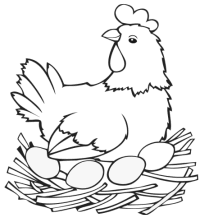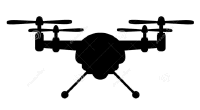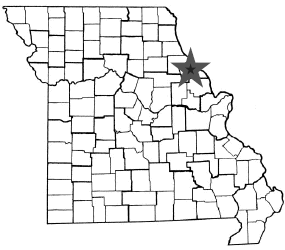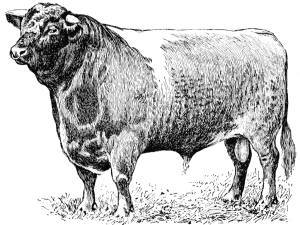

To send a message to an author, click on the author's name at the end of the article.
This Month in Ag Connection | Ag Connection - Other Issues Online

Maintaining a small poultry flock is growing in popularity. Backyard flocks can provide eggs, meat, and an opportunity for all family members to participate and learn animal care. The majority of backyard flocks are raised to provide eggs for the family. Excess eggs can be a source of additional income. To ensure egg quality in small backyard flocks, producers must learn to properly handle the eggs. This article focuses on handling eggs for high quality and safe for consumption.
Collect eggs as frequently as possible, preferably 2-3 times per day. Frequent collection will help prevent accumulation of dirt and stain on the shells. Most flocks will lay the majority of eggs by 10:00 am. Eggs are more likely to get dirty or broken the longer they lay in the nest. Interior quality also decreases the longer the egg is left in the nest.
Dirty eggs should be washed before being stored in the refrigerator. Wash dirty eggs with running water (no immersion) that is 10 degrees warmer than the temperature of the eggs. The warmer water will cause the contents of the egg to swell and push dirt away from the tiny pores on the shell surface. When eggs are washed, the protective layer called the cuticle is also washed from the shell surface; therefore, bacteria have an easier time entering the egg after washing. Dry and cool eggs quickly after washing. Keep the eggs at a constant temperature until they are washed. Never cool eggs rapidly before then. Unwashed eggs can be held at room temperature for up to 30 hours after being laid. Eggs stored properly in a carton should hold quality of Grade A for at least four weeks.

Eggs can be packaged into previously used cartons as long as the carton is clean and in sound condition. All markings that do not pertain to the eggs currently in the carton must be removed, if selling to marketing outlets. Cartons of all eggs sold in the United States must contain the following safe handling instructions: "To prevent illness from bacteria: Keep eggs refrigerated, cook eggs until yolks are firm, and cook foods containing eggs thoroughly." In order to package eggs, producers must have either a dealer or limited retailer's egg license. All cartons must have either the approved license number OR the name and address of the person packaging the eggs, AND the size, grade, and the date the eggs are packaged.
Eggs should be placed with the small end down and stored at 40-45 degrees. Eggs should never be stored with materials that have an odor. Eggs will take in the odor, which can alter the taste of the egg. Store eggs in the back of the refrigerator where it is colder, and not in the door.
For more information on backyard flock and egg production contact the local livestock specialist. For more information on the rules and regulations for selling eggs in Missouri, visit https://agriculture.mo.gov/weights/device/.
Source: Heather Conrow, Field Specialist in Livestock
This Month in Ag Connection | Ag Connection - Other Issues Online

The use of technology in agriculture is influenced by price and usefulness. Drones have intrigued many farmers due to the potential uses including monitoring crops and livestock, applying seed, fertilizers and pesticides. There may be fun factors too such as taking pictures and controlling a drone. Does it financially make sense to use a drone for spraying crops?
Recently, MU Extension published a new guidesheet G1274 Economics of Drone Ownership for Agricultural Spray Applications. The publication both covers the cost effectiveness of owning a drone and drone custom application. The drone used in the examples was an Agras T40, which can carry up to 10.6 gallons of spray and 110 pounds of spread load, a total of 18.5 gallons, allowing for spraying, spreading, surveying and mapping.
Two companion tools were developed to complement the guidesheet. Both companion tools are Excel spreadsheets. For custom applicators the tool is Drone Spray Cost Estimator: custom operation version. The tool for farmers is Drone Spray Cost Estimate: farmer version. The purpose of the Excel spreadsheets is to allow customization of both the ownership and operating costs to estimate the cost per acre of using drones for agricultural spraying. The tools simplify the process of estimating cost per acre by allowing users to customize inputs including: interest rate, number of batteries, lifespan of drone, acres per year, acres per flight, time to recharge, cleaning, diesel price, labor and more.
The guidesheet and tools can be found online https://extension.missouri.edu/publications/g1274.
Source: Mary Sobba, Field Specialist in Ag Business
This Month in Ag Connection | Ag Connection - Other Issues Online

The 53rd Annual Northeast MO Performance Tested Bull Sale was held in Palmyra on March 29. The overall average on thirty-three bulls was $6,221.
The high breed average was Simmental at $7,367. Other breed averages were Polled Hereford $6,400 and Angus $6,086.
High selling bulls in the sale were Angus consigned by Graupman Angus, Palmyra, $11,250, Graupman Angus, $8,500, and Hudson Angus Farms, Jefferson City, $8,500, purchased by Randy Baker, LaPlata, Nathan Parker, Quincy, IL, and Sunsetview Farm, Center. Seven other bulls sold for $7,000 or higher.

Bulls offered in this sale met certain predetermined standards to be eligible for this sale. Bulls must be in the upper 50th percentile in two out of four EPD (Expected Progeny Difference) traits: CE or BW, WW, YW, or Milk, as well as yearling height 49 in or above, weight at a year 1100 lbs. or above, semen tested and examined for breeding soundness and to be found satisfactory potential breeders. As well as meeting health requirements: tested and found negative for BVD-PI, vaccinated against Leptospirosis, and must follow state requirements for trichomoniasis. Twenty-six bulls in the sale utilized genomic testing to improve the accuracy of EPD's for the perspective buyer.
The sale is a cooperative effort between the Northeast Missouri BCIA and University of Missouri Extension. For details on participating, contact the nearest Extension Livestock Specialist. The next sale will be March 28, 2026, at F & T Livestock Market, Palmyra.
Source: Daniel Mallory, Field Specialist in Livestock
This Month in Ag Connection | Ag Connection - Other Issues Online
MU Extension has a tool for assessing physical, environmental and cultural characteristics of land. The tool is called Ag Site Assessment and can be found online at (AgSite.missouri.edu).
The site has many choices in data layers including: soils, streams, wetlands and ponds, watersheds, floodplains, legal descriptions, threatened and endangered species and more.
There are four steps to creating a report on a piece of land: 1) enter a nearby location such as a zip code, 2) navigate to the location on the map, 3) outline by clicking the borders (which also calculates acres) and 4) generate the report. Once the report is generated, there are many features to explore. Each section of the report has additional information. Each section will have hyperlinks "page" and/or "map". These links lead to a vast amount of information. For example, additional layers can be added to maps; labels may be put on maps, soil boundary lines may be added and many other options.
The site is free to use and allows printing and creating PDF maps. Maps can also be saved as jpg, png, gif and eps formats.
The site was designed so farmers can use the reports by printing or saving them as PDF files for practical ideas. A few uses could include sharing them with custom spray applicators, landlords and contractors moving dirt. Looking at the maps may also help in developing alternatives for individual areas of a farm and learning more.
Creating the site was partially funded by a grant through the North Central Extension Risk Management Education Center and the USDA National Institute of Food and Agriculture. The site was designed and created by the MU Ag Economics Department.
Source: Mary Sobba, Field Specialist in Ag Business
This Month in Ag Connection | Ag Connection - Other Issues Online
University of Missouri Extension field specialists across the state monitor insect traps and count the number of pests throughout the growing season. If the numbers exceed threshold levels, the IPM Pest Monitoring Network issues text/email alerts to subscribers.
Corn Leafhopper, originally identified as a new species of concern in 2024, has been added to our monitoring list in 2025. Producers can subscribe to the free Pest Monitoring Network at https://ipm.missouri.edu/pestMonitoring/ by simply providing your name and email to receive for pest alerts.
MU's Pest Monitoring Network is designed to send out alerts when the following insects reach specific thresholds during the growing season:
To subscribe for alerts on one or all listed insects, visit https://ipm.missouri.edu/pestMonitoring/ or e-mail ipm@missouri.edu.
Source: Dr. Todd Lorenz, Field Specialist in Agronomy
This Month in Ag Connection | Ag Connection - Other Issues Online
Ornamentals
Vegetables
Fruits
Source: Missouri Botanical Garden
This Month in Ag Connection | Ag Connection - Other Issues Online
Warren County - Aug. 20-22
Warrenton, MO
For details call 636-456-3434 ext. 3
Morgan County - Sept. 4-6
Versailles, MO
For details call 573-378-5822 ext. 3
Linn County - Sept. 30 - Oct. 2
Linneus, MO
For details call 660-895-5123
Or email tatev@missouri.edu
This Month in Ag Connection | Ag Connection - Other Issues Online

Publishing Information
Ag Connection is published monthly for Northeast and Central areas of Missouri producers and is supported by the University of Missouri Extension, the Missouri Agricultural Experiment Station, and the MU College of Agriculture, Food and Natural Resources. Managing Editor: Mary Sobba.